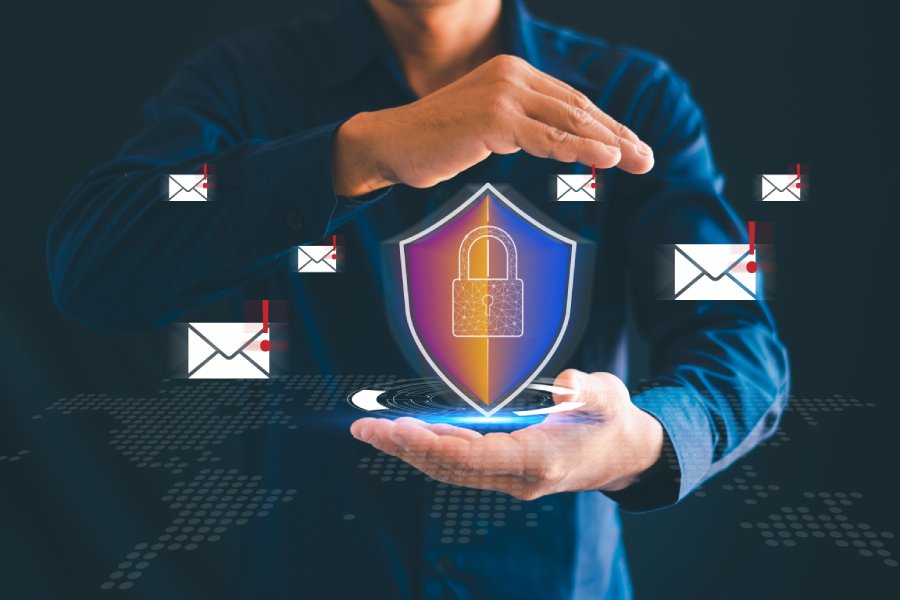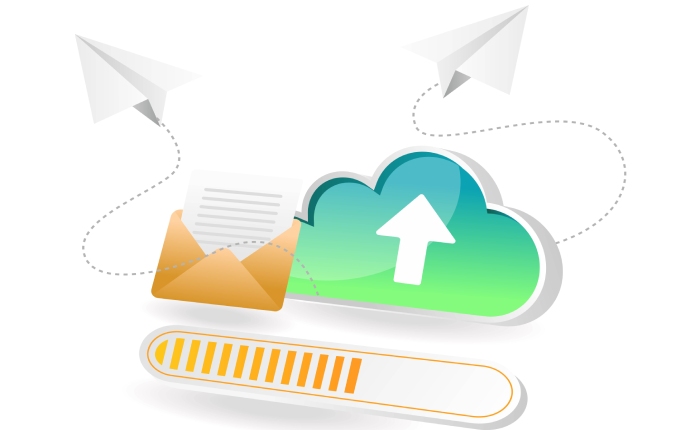Email is one of the most used forms of communication. There are around 4 billion email users worldwide, and the number of emails sent and received per day is estimated to increase to about 376 billion in 2025 (from about 306 billion in 2020). With over 4.5 billion users expected to use email in 2025, it wouldn’t be wrong to say that emails have fundamentally transformed how digital communication is carried out, whether for business, marketing, or some other purpose. However, it is also the same channel that is responsible for a majority of phishing attempts globally. Email security and phishing protection are major focal points for IT Security services and global tech giants alike.
The given graphs show the growth of emails and the online industries most targeted by phishing attacks as of 1st Quarter 2021, respectively. The amount of email usage has exploded over the years, and so have the phishing attempts.
How Are Big Tech Products Protecting Users’ Emails?
There are a variety of features introduced by tech brands to protect users’ emails. For instance, Apple’s newest operating system, iOS 15, has implemented a string of features to keep emails from getting compromised by malicious actors. Below are some of such features rolled out by tech giants.
The ‘Hide My Email’ Feature
Through its new operating system, iOS 15, this unique initiative by Apple lets the user create a random email address whose incoming emails get forwarded to the original email inbox. It is helpful if one wants to sign up for a newsletter or create an account and does not wish to give out the actual email ID. The best part is that when one does not want to continue with the same, one can pause it or delete it permanently. It works with an iCloud+ account that can cost anywhere between $1 to $10. Anyone who has the account already will get the feature by default.
Mail Privacy Protection
Mail Privacy protection is another addition in the new iOS 15, whereby the user’s IP address is hidden and remote content is loaded privately in the background, even if the email is not opened. The feature prevents marketers from gaining access to user information. Usually, when someone sends a marketing email, they can get information about several actions, such as if the email was opened and read or the user visited the marketer’s website. However, with this feature, the user’s privacy is protected, and the sender cannot know what the user did after receiving the email.
Cloudflare Email Routing
Cloudflare, a big name in cloud services, has recently stepped into the realm of email security services. One of the initial email features offered by Cloudflare is the email routing feature. Using this feature, one can configure a custom email address with a custom domain within minutes using a few clicks. The idea is to have a professional and official-looking email address in the format you@your_organization.com. However, it will direct the emails received to the user’s email account like Gmail or Outlook. There is no need to have an organization by the name mentioned in the custom-created ID. The advantage is keeping one’s email address anonymous, and the sender only sees the custom email address. It means you can keep your email ID hidden while conducting business with an alternative email address. Individual users and organizations can avail of the feature, and it is free of cost as of now. One can redirect up to ten email addresses to their private inbox this way.
The Way Forward
The best way to deal with online fraud and phishing attempts through spurious emails is to be vigilant. While the above email security features are of significant help, one also needs to leverage other possible methods for preserving email privacy and security for better protection. There is no alternative to being extra-cautious while continuing business virtually. Specific steps that are ideal for protecting email communication and keep phishing and other threats away are:
Upgradation of Systems
Upgradation of systems always provides the user with a newer and better service version with better security measures implemented. As upgraded versions will have many vulnerabilities and loopholes rectified and patched, there will be fewer chances for malicious intrusions. Besides, as seen in the points mentioned above, new services by the big tech organizations can include implementing new features, which will go a long way in protecting users’ privacy.
Creating Awareness
Creating awareness is the best line of defense against fraudulent attempts to gain illegal access to personal accounts. Email security training is paramount to the well-being of the individual and the organization. Knowing which email to attend to and which ones to ignore and redirect to spam or trash is a time-tested methodology to cover one’s virtual assets from malicious interventions.
Email Hosting Plans
Getting hold of an appropriate email hosting plan with facilities like email archiving and email forwarding should be employed. These plans also include email security features that help in protecting sensitive information. Configuring outbound SMTP is also part of these plans, and they ensure that emails can be reliably sent from any program, application, or device.
Final Words
Prominent technology corporations like Apple and Google push the tech envelope to build systems that protect their users from phishing and other online threats. The new features are helpful for email privacy protection and security and improve productivity manifold. Features like ‘Hide My Email’ and IP hiding are successful attempts by these organizations to enhance the user experience by granting the privilege of improved control over their privacy and improve the email security posture at large.

